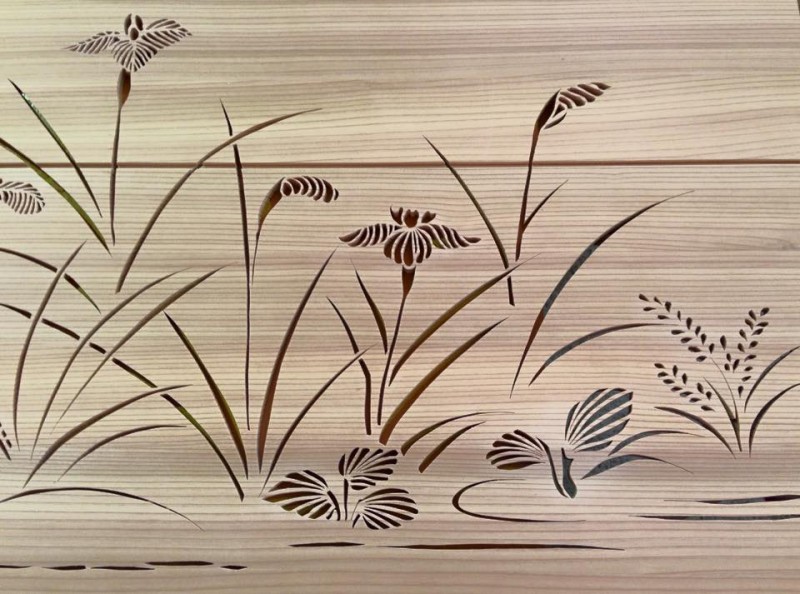




透かし彫り / Openwork processing
糸のこを使って木や金属、石などの薄板を切抜き,残った部分で模様を表現する技法で、
一昔前は欄間の彫刻や刀剣の鍔(つば)などに用いられていた技術です。
今回はこの技術がお鮨屋さんのカウンターバックの光り壁に採用され、
絵の提案から製作〜納品までの管理をさせて頂きました。
通常、木種としては桧を使う場合が多いのですが、今回はあえて杉板を使いたい!
という要望でしたので、目利きの職人さんに限られた時間内で綺麗な材料を選んで頂き、
そのお陰で、和に寄り過ぎず全体的に品良く綺麗にまとめる事が出来ました。
下絵については、襖絵などに絵を描く砂子師に依頼し、墨絵で下絵を書いて強弱を読み取ってから
線画に落とし込み、それを京都の組子や透かし彫り、指物などを得意とする職人さんに細かいカットを
全て手作業で製作して頂き実現しました。
2つの職人技が相まって、日本人の心使いである「おもてなし」の表現を
目に見える形として実現できた作品となりました。
Openwork is a processing method to express design pattern by left-over part which is cut out from thin board of wood, metal, or stone by a coping saw. This technique, a little while ago, was used for TSUBA, the sword guard or RANMA, the wooden panel used as a decorative transom above paper-covered sliding doors.
Normally, Hinoki, the Japanese cypress, is used as the base wood in most cases, but Sugi, the Japanese cedar, was used this time due to a strong request from the client. An artisan with excellent eyes selected beautiful base tree within the tight time frame. All efforts come up together, and the object got completed in elegant manner, not going too much Japanese taste.
The base drawing design was done by Sunago-shi, who usually does drawings and paintings on Fusuma, a Japanese sliding doors, or the Byobu, a folding screen - First, the line was drawn by monochrome painting, then that was transformed into the �line drawing, preserving the original strength expression. This was then passed to an artisan in Kyoto, who does excellent wooden work such as Kumiko, Openwork, and Sashimono, and the final figure came out after the incredibly fine cutting by hand.
The two artisans' technique have made a superb object to express our spirit of “Omotenashi” to welcome the guests.
design/A.N.D





